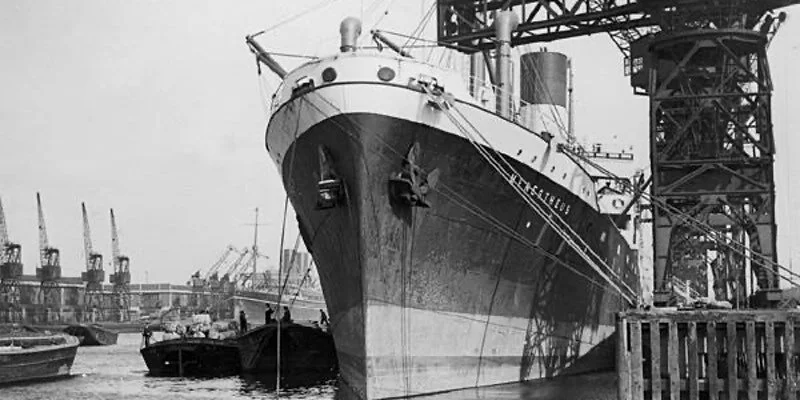
Monica Ali’s book Brick Lane recounts the experiences of Nazneen, a young woman in Bangladesh who, after an arranged marriage, travels to live with her husband in Tower Hamlets. From being a passive, shut-in migrant Nanzeen becomes an autonomous working woman. The Bengali migration to London goes back 400 years to lascar seamen hired by the East India Company and continued into the 20th century. The clothing sweatshops Bengalis worked in began to die out in London, though women like Nazneen continued to do piecework-sewing in their homes. Meanwhile migrants founded and worked in restaurants serving modified Bengali dishes. Come see back-streets and estates of a highly diverse area socially and architecturally, while listening to the words of Nazneen, her family and friends as they adapt to a new life. It's a London most Londoners don't know.
Guide: Laura Agustín
TICKETS
Meet outside Whitechapel Station, London E1 1BY
As recently as 1979, 85% of the area around what is now Canada Water was occupied by the waters of the Surrey Commercial Docks. Since then there has been a radical transformation, the former docks and timber storage ponds becoming woodland, parks, housing and shops. A new phase of development is bringing change again. On this Guided Walk, Rob will find the buildings from the old docks that have survived, explain how the docks worked and tell the story of their complex history. He will also explain how this part of London transformed into Docklands and why it is different to Canary Wharf, its neighbour on the other side of the river.
Guide: Rob Smith
TICKETS
Meet at Canada Water Station, Deal Porter Way, London SE16 2YS
In 1601 Sir James Lancaster left London on the first voyage of the East India Company which, over the following 250 years, became one of the most powerful companies the world has ever seen, controlling the fate of millions of people, wielding its own army and dominating trade with South and East Asia. It was Britain's first multinational company and its effects on London were immense. This virtual walk with Rob Smith on Zoom will show you some of the legacy of the East India Company today, and where you can find them, in East London and beyond, including large houses like Danson House, parks like Wanstead and East India Company Warehouses in the City at Devonshire Square. Rob will look at how street names around the old East India Docks have a connection to the East India Company and where you can find connections to them in Croydon. There will be a look at East India Company objects can be found in museums and even in the Crown Jewels.
Virtual Guide: Rob Smith
TICKETS
Online Event
The Royal Group of Docks in East London were one of the largest engineering projects in London's history. Comprising The Royal Victoria, Albert and King George V Docks, when built, they were also the largest enclosed body of water in the world. They still make an imposing sight - 12 miles of waterfront undergoing redevelopment. This 50-minute Virtual Walk via Zoom tells their story. Your guide, Rob Smith, will show slides about the building of the docks, the people who built them, the technical advances that had a huge impact on London's economy, and the factories that were built alongside them. Rob will look at the communities that worked in the docks, how they struggled to improve working conditions and how they faced challenges like the Silvertown explosion of 1917 and the Blitz. You will hear about the decline of the docks and the long-running plans to redevelop them, and get to see heritage features that remain today so you can go and explore for yourself.
Virtual Guide: Rob Smith
TICKETS
Online Event
Blackwall in London’s Docklands has as much maritime history as Greenwich – it’s just that you have to look a bit harder to find it. In this two-hour Guided Walk, Rob Smith uses fragments of the old dockyard and street names to tell the story of the East India Company, who made Blackwall their home for almost 250 years. You will hear stories of bravery, greed and ingenuity. The walk also visits the Leamouth Peninsula, one of the most unusual places on the Thames with a maritime history of its own. Rob will also tell the stories of some of the ships built in the famous Blackwall Yard and you’ll hear how Blackwall is at the heart of communications in the 21st century.
Guide: Rob Smith
TICKETS
Meet at East India DLR Station, Blackwall Way, London E14 9PS





